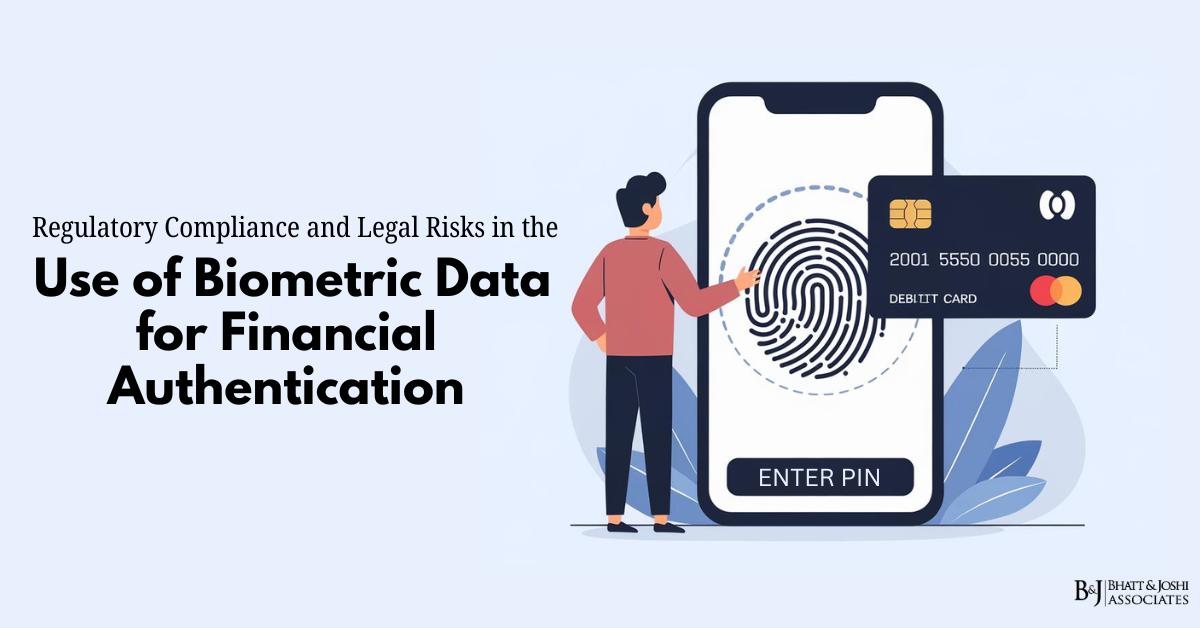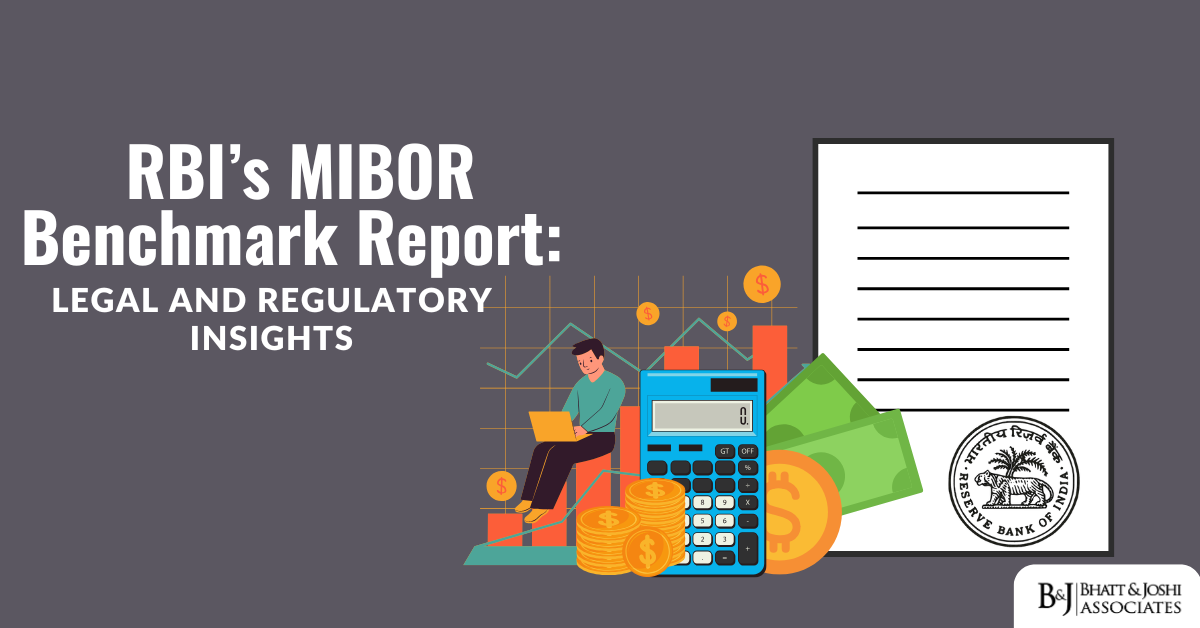Introduction
The integration of biometric data into financial authentication processes has revolutionized the way financial institutions secure transactions and verify customer identities. From fingerprint scans and facial recognition to voiceprints and iris scans, biometric authentication offers a more secure and convenient alternative to traditional methods such as passwords and PINs. As financial institutions increasingly adopt these technologies, the use of biometric data has become central to efforts aimed at preventing fraud, enhancing customer experience, and ensuring compliance with regulatory requirements.
However, the use of biometric data in financial authentication also introduces significant legal and regulatory challenges. Biometric data is inherently sensitive, as it is uniquely tied to an individual’s identity and cannot be easily changed if compromised. This raises concerns about privacy, data protection, and the potential for misuse. Financial institutions must navigate a complex landscape of regulations and legal risks associated with the collection, storage, and use of biometric data. Ensuring compliance with these regulations is critical not only for protecting customer data but also for maintaining the trust and confidence of customers and regulators.
This article provides an in-depth exploration of the regulatory compliance and legal risks involved in the use of biometric data for financial authentication. It examines the relevant legal frameworks, the specific compliance obligations for financial institutions, the potential legal risks, and the strategies for mitigating these risks. Additionally, the article discusses emerging trends and the future of biometric data regulation in the financial sector.
The Role of Biometric Data in Financial Authentication
Biometric authentication leverages unique physiological or behavioral characteristics of individuals to verify their identity. In the financial sector, biometric data is used to secure transactions, authenticate customers, and prevent unauthorized access to accounts and services. Common forms of biometric authentication include fingerprint recognition, facial recognition, voice recognition, and iris scanning. These methods are increasingly favored over traditional authentication methods because they are more difficult to replicate or steal, thereby offering enhanced security.
Financial institutions use biometric authentication in various contexts, such as enabling customers to access online banking services, authorizing payments, verifying identities during onboarding processes, and securing physical access to financial facilities. For instance, many banks now allow customers to log into mobile banking apps using fingerprint or facial recognition technology. Similarly, voice recognition is used in call centers to authenticate customers over the phone, reducing the risk of fraud.
The adoption of biometric authentication in the financial sector is driven by several factors, including the need to combat rising cyber threats, meet customer demands for convenience, and comply with regulatory requirements. However, the use of biometric data also brings new challenges, particularly in terms of regulatory compliance and the legal risks associated with data breaches and misuse.
Regulatory Frameworks Governing the Use of Biometric Data in Financial Authentication
The use of biometric data in financial authentication is subject to a complex web of regulatory frameworks that vary across jurisdictions. These frameworks are primarily concerned with data protection, privacy, and financial regulation. Financial institutions must ensure that their use of biometric data complies with these regulations to avoid legal risks and penalties.
Data Protection and Privacy Laws
Data protection and privacy laws are the cornerstone of the regulatory framework governing the use of biometric data in financial authentication. These laws classify biometric data as sensitive or special category data, subjecting it to stricter protection requirements than other types of personal information.
In the European Union, the General Data Protection Regulation (GDPR) is the primary legal instrument governing data protection. The GDPR categorizes biometric data as a special category of personal data, meaning that its processing is generally prohibited unless specific conditions are met. These conditions include obtaining explicit consent from the data subject, fulfilling a legal obligation, or processing the data for reasons of substantial public interest.
The GDPR imposes several obligations on financial institutions that process biometric data, including the requirement to implement appropriate technical and organizational measures to protect the data. This includes encryption, secure storage, access controls, and regular data protection impact assessments (DPIAs). Financial institutions must also ensure transparency by providing customers with clear information about how their biometric data will be used, and they must obtain explicit consent before collecting or processing this data.
In the United States, data protection laws governing the use of biometric data are more fragmented, with a combination of federal and state laws providing varying levels of protection. At the federal level, there is no comprehensive data protection law equivalent to the GDPR, but sector-specific regulations such as the Gramm-Leach-Bliley Act (GLBA) provide some protections for financial data, including biometric information. The Federal Trade Commission (FTC) enforces consumer protection laws that prohibit unfair or deceptive practices related to the handling of biometric data.
Several U.S. states have enacted their own biometric privacy laws, with Illinois’ Biometric Information Privacy Act (BIPA) being the most notable. BIPA imposes strict requirements on entities that collect biometric data, including obtaining informed consent, providing notice of data collection practices, and establishing guidelines for data retention and destruction. BIPA also provides consumers with a private right of action, allowing them to sue for damages if their biometric data is mishandled or compromised.
Financial Regulations
In addition to data protection and privacy laws, financial institutions must also comply with sector-specific financial regulations that govern the use of biometric data. These regulations are designed to ensure the security and integrity of financial transactions, protect customer data, and prevent financial crimes such as money laundering and fraud.
In the European Union, the Payment Services Directive 2 (PSD2) is a key regulation that impacts the use of biometric data in financial authentication. PSD2 requires financial institutions to implement strong customer authentication (SCA) for electronic payments, which often involves the use of biometric data. Under PSD2, biometric authentication methods such as fingerprint recognition and facial recognition are considered secure and compliant with the SCA requirements. However, financial institutions must also ensure that the use of biometric data is consistent with the data protection principles outlined in the GDPR.
In the United States, the Office of the Comptroller of the Currency (OCC), the Federal Reserve, and other federal regulators oversee financial institutions’ compliance with security and privacy requirements. These regulators may issue guidance on the use of biometric data in financial authentication, emphasizing the importance of implementing robust security measures and protecting customer data from unauthorized access and breaches.
International Standards and Guidelines
In addition to national and regional regulations, international standards and guidelines provide best practices for the use of biometric data in financial authentication. These standards are developed by organizations such as the International Organization for Standardization (ISO), the International Electrotechnical Commission (IEC), and the Financial Action Task Force (FATF).
ISO/IEC 27001 is an internationally recognized standard for information security management that provides a framework for protecting biometric data in financial authentication systems. It outlines best practices for implementing security controls, managing risks, and ensuring the confidentiality, integrity, and availability of biometric data.
The FATF, which sets international standards for combating money laundering and terrorist financing, has also issued guidance on the use of biometric data in financial institutions. The FATF encourages the use of biometric technologies to enhance the accuracy and reliability of customer identification and verification processes, while also emphasizing the need for strong safeguards to protect biometric data from misuse.
Legal Risks Associated with the Use of Biometric Data in Financial Authentication
The use of biometric data in financial authentication carries several legal risks that financial institutions must carefully manage. These risks include potential breaches of data protection laws, liability for data breaches, and the risk of discrimination and bias in biometric systems.
Breaches of Data Protection Laws
One of the most significant legal risks associated with the use of biometric data in financial authentication is the potential for breaches of data protection laws. Given the sensitive nature of biometric data, financial institutions are subject to strict legal requirements when collecting, processing, and storing this information. Any failure to comply with these requirements can result in severe penalties, including fines, legal liability, and reputational damage.
Under the GDPR, financial institutions that fail to protect biometric data or that process it without a valid legal basis can face fines of up to 4% of their annual global turnover or €20 million, whichever is higher. These fines reflect the seriousness of data protection breaches and serve as a deterrent to non-compliance.
In the United States, state laws such as BIPA also impose significant penalties for non-compliance. BIPA allows consumers to sue for statutory damages for each violation of the law, which can quickly add up to substantial sums in the event of a widespread breach. For example, in cases where biometric data is collected without informed consent or where data retention practices violate BIPA’s requirements, financial institutions may face costly lawsuits and settlements.
Liability for Data Breaches
Another major legal risk is the liability for data breaches involving biometric data. Data breaches can occur due to various factors, including cyberattacks, insider threats, and inadequate security measures. Given the irreversible nature of biometric data, once it is compromised, the affected individuals are permanently at risk of identity theft, fraud, and other forms of misuse.
Financial institutions that suffer a data breach involving biometric data may face significant legal liability for the resulting damages. Under the GDPR, individuals have the right to seek compensation for material and non-material damages resulting from a data breach, including financial losses, emotional distress, and loss of reputation. In the United States, consumers may file class-action lawsuits against financial institutions that fail to protect their biometric data, seeking damages for the breach.
In addition to legal liability, financial institutions may also face regulatory enforcement actions, including fines, sanctions, and remediation orders. Regulatory authorities may require institutions to implement additional security measures, conduct independent audits, and provide affected customers with identity theft protection services.
Discrimination and Bias in Biometric Systems
The use of biometric data in financial authentication also raises concerns about discrimination and bias. Biometric technologies, such as facial recognition and voice analysis, have been shown to exhibit biases based on race, gender, and other characteristics. These biases can lead to discriminatory outcomes in financial services, particularly in contexts such as access to credit, account opening, and customer support.
For example, facial recognition systems may have higher error rates when identifying individuals with darker skin tones, leading to unequal treatment of certain groups of customers. Similarly, voice analysis technologies may exhibit biases that affect the accuracy and fairness of customer service interactions, potentially resulting in discriminatory outcomes.
Financial institutions that use biased biometric systems may face legal challenges under anti-discrimination laws. In the European Union, the GDPR prohibits the processing of biometric data in a way that results in discrimination. In the United States, financial institutions may be subject to lawsuits under the Equal Credit Opportunity Act (ECOA) or Title VII of the Civil Rights Act if their biometric authentication systems result in discriminatory treatment of customers.
To mitigate the risk of discrimination and bias, financial institutions must ensure that biometric technologies are designed and tested to be fair and inclusive. This includes conducting bias assessments, using diverse training datasets, and implementing safeguards to prevent discriminatory outcomes. Additionally, institutions should provide customers with the ability to challenge or appeal decisions that are based on biometric data.
Mitigating Legal Risks in the Use of Biometric Data for Financial Authentication
Given the legal risks associated with the use of biometric data in financial authentication, financial institutions must take proactive steps to mitigate these risks and ensure compliance with regulatory requirements.
Implementing Robust Data Protection Measures
One of the most effective ways to mitigate legal risks is to implement robust data protection measures that comply with relevant legal requirements. This includes encrypting biometric data during transmission and storage, using secure authentication protocols, and conducting regular security audits to identify and address vulnerabilities.
Financial institutions should also implement a privacy-by-design approach, which involves incorporating data protection principles into the design and development of biometric authentication systems. This includes conducting data protection impact assessments (DPIAs) to identify potential risks and implementing measures to mitigate those risks.
Ensuring Transparency and Informed Consent
Transparency and informed consent are critical components of regulatory compliance and risk mitigation. Financial institutions must provide customers with clear and concise information about how their biometric data will be used, and they must obtain explicit consent before collecting or processing this data.
Under the GDPR, financial institutions must ensure that consent is freely given, specific, informed, and unambiguous. Customers should be provided with easy-to-understand privacy notices that explain the purpose of data collection, the types of data being collected, and how the data will be used. Customers should also have the option to withdraw their consent at any time.
Conducting Regular Compliance Audits
Regular compliance audits are essential for ensuring that financial institutions remain in compliance with data protection and financial regulations. These audits should assess the institution’s data protection practices, including the security of biometric data, the adequacy of consent processes, and the effectiveness of risk management measures.
Compliance audits should also evaluate the institution’s use of biometric technologies to ensure that they are not resulting in discriminatory outcomes. This includes assessing the fairness and inclusivity of biometric systems, conducting bias assessments, and implementing safeguards to prevent discrimination.
Engaging with Regulators and Industry Bodies
Engaging with regulators and industry bodies is another important strategy for mitigating legal risks. Financial institutions should stay informed about emerging regulatory trends and guidance related to biometric data and financial authentication. This includes participating in industry forums, attending regulatory briefings, and collaborating with regulators to ensure that their practices align with regulatory expectations.
By engaging with regulators and industry bodies, financial institutions can also contribute to the development of best practices and standards for the use of biometric data in financial authentication. This helps to promote consistency and alignment across the industry, reducing the risk of legal challenges and regulatory scrutiny.
Providing Customer Support and Remediation
In the event of a data breach or other incident involving biometric data, financial institutions must be prepared to provide timely and effective customer support and remediation. This includes notifying affected customers of the breach, offering identity theft protection services, and providing clear instructions on how customers can protect their data.
Financial institutions should also have a plan in place for addressing customer complaints and disputes related to the use of biometric data. This includes establishing clear procedures for handling complaints, providing customers with the ability to challenge or appeal decisions, and offering fair and transparent resolutions.
Emerging Trends and Future Directions in the Use of Biometric Data for Financial Authentication
As the use of biometric data in financial authentication continues to evolve, several emerging trends are likely to shape the future of regulation and compliance in this area.
Increased Focus on AI and Biometric Data Regulation
As artificial intelligence (AI) becomes more integrated into biometric authentication systems, there is likely to be increased regulatory focus on the intersection of AI and biometric data. Regulators may introduce new requirements for the use of AI in financial authentication, including transparency, accountability, and fairness.
In the European Union, the proposed Artificial Intelligence Act (AI Act) seeks to establish a comprehensive regulatory framework for AI, including the use of biometric data in AI-driven systems. The AI Act classifies AI systems involving biometric data as high-risk and subjects them to stringent regulatory requirements, such as mandatory risk assessments, transparency obligations, and human oversight.
Greater Emphasis on International Cooperation
Given the global nature of digital finance and biometric data flows, there is likely to be greater emphasis on international cooperation and the harmonization of regulatory standards. International organizations such as the Financial Action Task Force (FATF), the International Organization for Standardization (ISO), and the International Electrotechnical Commission (IEC) are likely to play a key role in developing global standards and guidelines for the use of biometric data in financial authentication.
By harmonizing regulatory standards across jurisdictions, international cooperation can help to ensure consistent and effective protection of biometric data, reduce the complexity of compliance for multinational financial institutions, and promote trust and confidence in global financial systems.
Evolving Consumer Expectations and Legal Rights
As consumers become more aware of the risks associated with biometric data, there is likely to be increased demand for stronger legal protections and greater transparency from financial institutions. Consumers may expect more control over their biometric data, including the ability to access, correct, delete, and transfer their data.
Regulators may respond to these evolving consumer expectations by introducing new legal rights and protections related to biometric data. Financial institutions will need to stay informed about these developments and ensure that their practices align with consumer rights and expectations.
Conclusion: Key Takeaways on Biometric Data for Financial Authentication
The use of biometric data in financial authentication offers significant benefits in terms of security, convenience, and compliance with regulatory requirements. However, it also introduces a range of legal and regulatory challenges that financial institutions must carefully navigate. Ensuring compliance with data protection and financial regulations is essential for protecting customer data, maintaining trust, and avoiding legal risks.
Financial institutions must implement robust data protection measures, ensure transparency and informed consent, conduct regular compliance audits, and engage with regulators and industry bodies to mitigate the legal risks associated with the use of biometric data. As the regulatory landscape continues to evolve, institutions must stay informed about emerging trends and developments to ensure that their practices remain compliant and aligned with legal and consumer expectations.
In conclusion, the regulatory compliance and legal risks involved in the use of biometric data for financial authentication are complex and multifaceted. By understanding and addressing these challenges, financial institutions can protect customer data, ensure compliance with legal obligations, and build trust in their biometric authentication systems.














